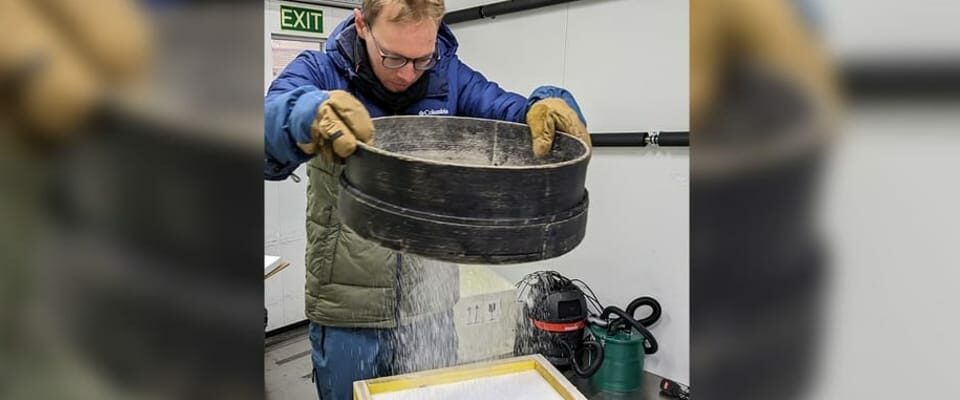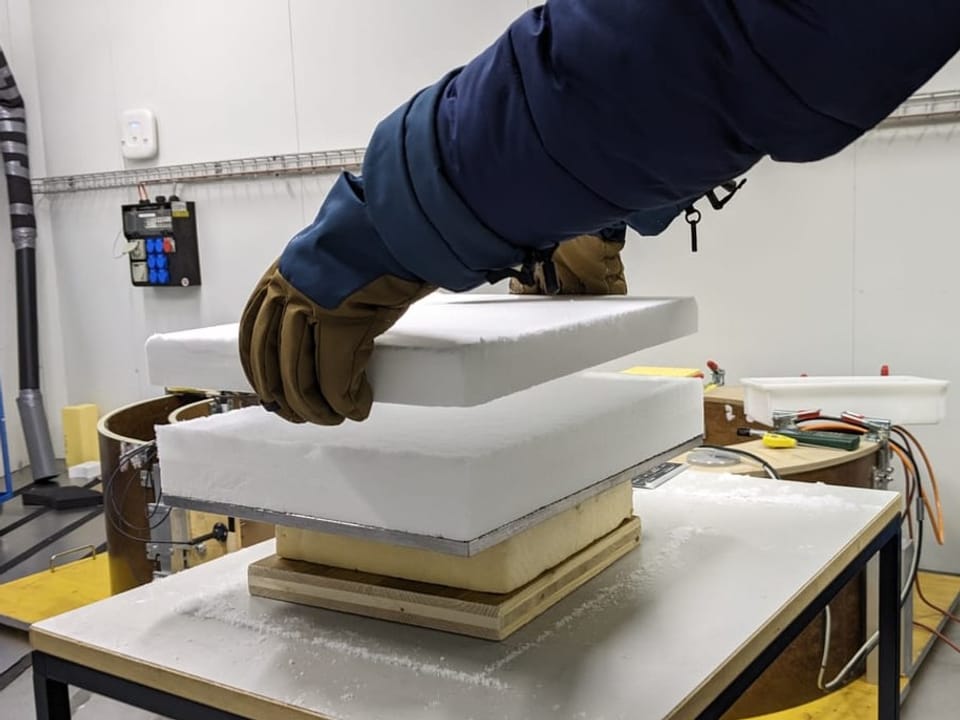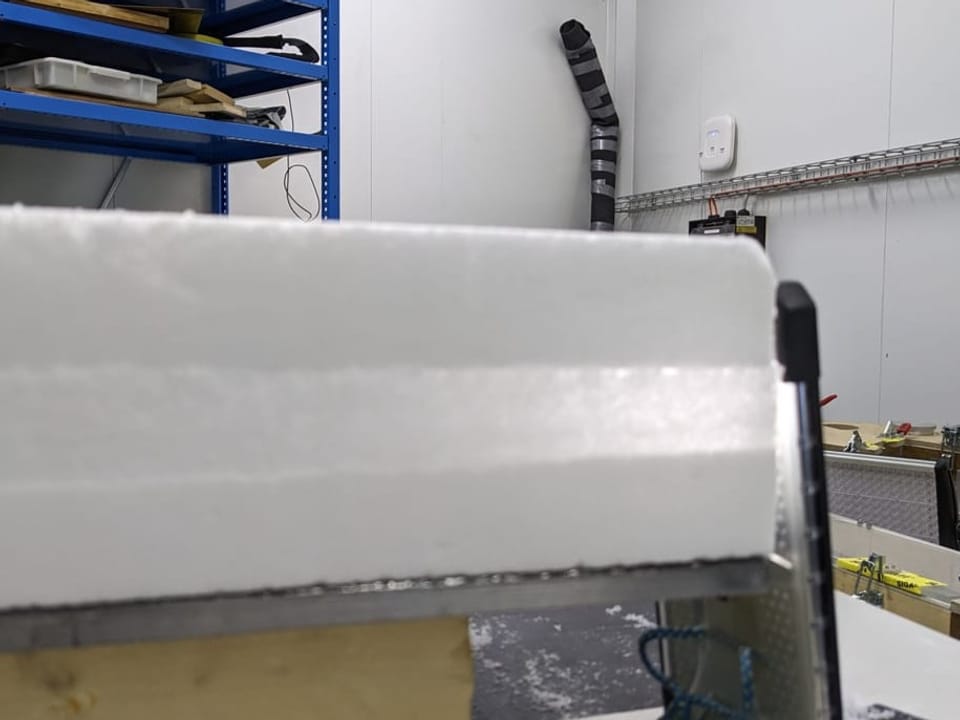Contents
When does an avalanche thunder into the valley? A researcher examines so-called weak layers in the snow in the cold laboratory at minus 20 degrees in order to be able to make better predictions
Doctoral student Jakob Schöttner is currently preparing a new experiment in Davos. In order for this to succeed, he has to work at minus 20 degrees Celsius. Wrapped up, he stands in the cold laboratory at the Institute for Snow and Avalanche Research (SLF), where the depths of winter prevail all year round. Its ingredients: snow plates, powder snow and a heating plate.
Cold on top, warm on the bottom
Schöttner wants to create what is known as a “weak layer”, which are layers of snow on which avalanches can slide. The weak layer in the laboratory should be as similar as it is to be found outside on the mountain. There, such weak layers form, for example, during long, cold nights. The snow surface can then become very cold, but below the snow cover it gets warmer and warmer towards the ground. Because snow insulates very well and locks in the geothermal energy.
So on the ground it can be “warm” zero degrees, while up on the snow surface it can be minus 20 degrees or even colder. These temperature differences in the snow cover have major consequences and can ultimately form the basis for avalanches.
The weak layer is created
If this warm-cold situation persists for several days, the snow begins to transform. This happens because water vapor rises from the warmer snow below. Higher up in the snowpack, where it is colder, this vapor refreezes. It accumulates on snow crystals, which enlarge and grow. The dreaded depth frost develops.
The snow sandwich
Jakob Schöttner reproduces this situation with his experiments in the laboratory. To do this, he builds a kind of snow sandwich. A stable, pressed sheet of snow provides a first, lower layer and then fine powder snow. Finally, another stable sheet of snow on top – and the sandwich is done.
The snow cover on a laboratory scale is then around 25 centimeters thick and ready for the actual experiment. Because now the deep rime is to be created artificially in the laboratory.
Heating in the cold laboratory
This requires a temperature gradient in the snow sandwich – just like outside on the mountain. Schöttner therefore “heats” his construction from below with a heating plate down to minus two degrees. Now everything is arranged: warmer below, colder above and the fine powder snow in the middle, which will slowly turn into deep frost in the coming days.
After five to seven days, the snow researcher can then make the crucial observations. He wants to investigate how the deep hoar behaves, how well the upper snow plate sits on the lower one. To do this, he measures, among other things, how much force is required until the upper layer slides off the weak layer of deep hoarfrost. A snow sandwich is also repeatedly put into the CT machine to be checked, where, thanks to X-rays, a detailed, fine image of the crystals becomes visible. A small work of art of nature.
Better models in the future
The aim of the research project is to identify how stable the different crystal forms are. How much pressure can they withstand? How much force does it take for a slab of snow to slide off? This knowledge should ultimately flow into computer models, which can then calculate a possible avalanche risk better and more precisely. But until then, Jakob Schöttner will still have to build numerous snow sandwiches.


